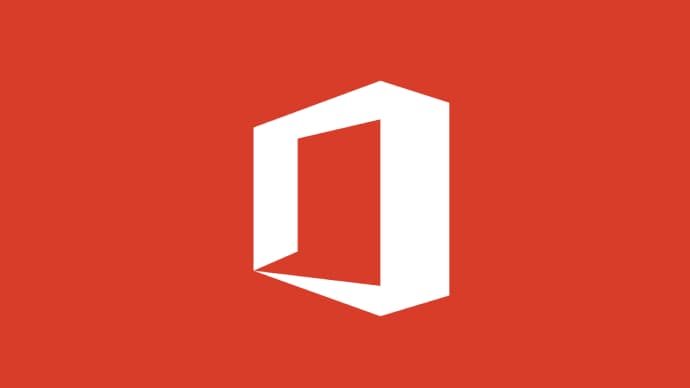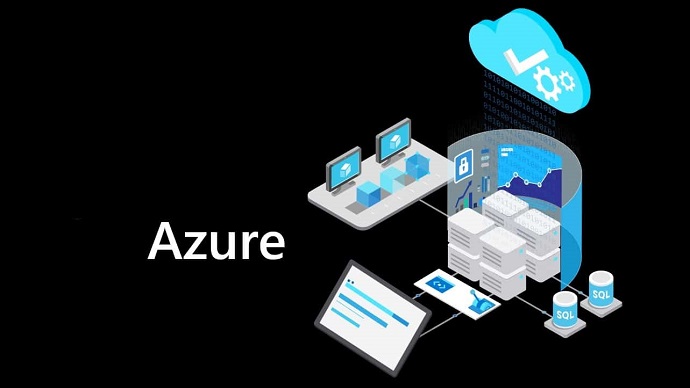Use VCE Exam Simulator to open VCE files

KCNA Linux Foundation Practice Test Questions and Exam Dumps
Question No 1:
Which native runtime is compliant with the Open Container Initiative (OCI) specifications?
A. runC
B. runV
C. kata-containers
D. gvisor
Answer:
The correct answer is A. runC.
The Open Container Initiative (OCI) is a set of industry standards that define how container images and container runtimes should behave. The goal of OCI is to ensure interoperability between container platforms and improve the portability of containerized applications. The OCI specifies standards for both container image formats and container runtimes, providing a common framework for developers and organizations to use across various container environments.
The OCI runtime specification outlines how container runtimes should launch and manage containers. It defines how container processes should be executed, how the container filesystem is handled, and how the environment is configured for the containerized application. A runtime that adheres to these specifications ensures that containers can run consistently across different platforms.
runC is the native runtime that is fully compliant with the OCI runtime specification. It is a lightweight, portable, and high-performance container runtime that can be used to launch and manage containers. runC was originally developed as part of the Docker project but has since been spun off as a separate open-source project under the governance of the OCI.
runC:
runC is a low-level container runtime that directly interfaces with the operating system to manage containers. It is written in Go and is the most commonly used runtime for launching containers in modern container orchestration platforms such as Docker and Kubernetes. runC complies with the OCI runtime specification, making it the default runtime for many container solutions.
Other Options:
B. runV: runV is another container runtime, but it is not OCI-compliant. It is designed to run containers inside virtual machines and focuses more on virtualized environments rather than container standards.
C. kata-containers: Kata Containers is an open-source project that combines the security benefits of virtual machines with the performance and speed of containers. While it uses the OCI specifications for container image formats, it uses a different architecture, running containers in lightweight virtual machines for added isolation.
D. gvisor: gvisor is a container runtime developed by Google that provides an additional layer of security between the container and the host system. While it is compatible with containers, it is not a native runtime that directly adheres to OCI specifications for container execution.
runC is the native container runtime that fully complies with the OCI runtime specification, making it a widely used, interoperable runtime for containerized applications. It provides a reliable and consistent environment for running containers, ensuring portability across different container platforms.
Question No 2:
Which Kubernetes API object is considered the best practice for running a scalable, stateless application on your cluster?
A. ReplicaSet
B. Deployment
C. DaemonSet
D. Pod
Answer:
The correct answer is B. Deployment.
In Kubernetes, managing the lifecycle of applications and ensuring scalability, reliability, and high availability is a critical part of a successful deployment. Kubernetes provides different API objects to handle these needs, each designed for specific use cases. To run a scalable, stateless application, the Deployment object is the recommended approach. Here's why:
A Deployment is a Kubernetes API object used to manage a set of Pod replicas in a scalable and declarative way. It ensures that a specified number of replicas of a pod are running at any given time. Deployments provide several benefits:
Scalability: You can easily scale the number of pod replicas up or down to handle changes in traffic. This is crucial for stateless applications, where each pod is identical and can handle requests independently.
Rolling Updates: Deployments allow you to roll out new versions of your application without downtime by using rolling updates. If a new version of the application is deployed, Kubernetes will gradually replace the old pods with new ones, ensuring minimal disruption.
Self-Healing: Deployments automatically replace pods that fail, ensuring that the desired number of replicas is maintained. If a pod crashes or becomes unhealthy, Kubernetes will restart it to maintain the specified replica count.
Statelessness: Stateless applications do not retain any internal state between requests, which means that any pod in the deployment can handle requests. Deployments are ideal for such applications because they allow multiple pods to share the workload evenly.
A. ReplicaSet: A ReplicaSet ensures that a specified number of pod replicas are running at all times. However, ReplicaSets are often managed by Deployments, and you would rarely use a ReplicaSet directly unless you need very fine-grained control over pod creation and scaling. A Deployment is the higher-level abstraction that manages ReplicaSets, making it a better choice for running scalable applications.
C. DaemonSet: A DaemonSet ensures that a copy of a pod runs on all or some nodes in the cluster. DaemonSets are used for background tasks that need to run on every node, such as logging agents or monitoring daemons. It is not suitable for stateless, scalable applications.
D. Pod: A Pod is the basic execution unit in Kubernetes, but it represents a single instance of a running process. While you can run a stateless application within a single pod, it does not provide scalability or management features like Deployments do. For scalable applications, managing multiple pods with a Deployment is the better choice.
A Deployment is the best way to manage a scalable, stateless application on a Kubernetes cluster. It provides the scalability, self-healing, and rolling update features necessary for running modern, cloud-native applications reliably and efficiently.
Question No 3:
When a CronJob is scheduled to run every hour in a Kubernetes cluster, what occurs in the cluster when it’s time for the CronJob to execute?
A. The Kubelet watches the API Server for CronJob objects. When it’s time for a Job to run, it runs the Pod directly.
B. The Kube-scheduler watches the API Server for CronJob objects, and this is why it’s called kube-scheduler.
C. The CronJob controller component creates a Pod and waits until it finishes running.
D. The CronJob controller component creates a Job. Then the Job controller creates a Pod and waits until it finishes running.
Answer:
The correct answer is D. The CronJob controller component creates a Job. Then the Job controller creates a Pod and waits until it finishes running.
In Kubernetes, a CronJob is used to schedule and manage jobs that run periodically, similar to cron jobs in Unix-based systems. A CronJob allows users to define a job that runs at specific intervals, such as every minute, hour, day, etc. The process of how a CronJob runs and what happens in the cluster when it’s time to execute is important to understand to ensure jobs are executed properly.
When a CronJob is scheduled, Kubernetes uses the CronJob controller to manage the execution of the job. The CronJob controller is responsible for creating a Job object when the scheduled time arrives. Here’s how it works step by step:
CronJob Controller: The CronJob controller monitors the CronJob definitions. Once the scheduled time arrives, the CronJob controller triggers the creation of a Job object. The CronJob itself does not run directly; it triggers the creation of a Job first.
Job Creation: The Job object specifies the pod template and the number of pods that need to be created to run the job. The Job is responsible for ensuring that the necessary number of pods are successfully created and executed.
Pod Creation by Job Controller: After the Job is created, the Job controller takes responsibility for creating the Pod that will run the job. The Pod is then scheduled by the Kube-scheduler onto an appropriate node in the cluster for execution. Once the Pod is created and running, the Job controller tracks its progress and ensures that the job completes as expected.
Completion: Once the Pod finishes executing the job, the Job controller marks the job as complete, and the resources associated with the Pod are cleaned up. If there are any failures during the Pod's execution, the Job controller will retry based on the retry policy defined for the Job.
A. Kubelet watches API Server for CronJob objects. When it’s time for a Job to run, it runs the Pod directly.
This is incorrect. The Kubelet is responsible for managing the lifecycle of Pods, but it does not directly manage CronJobs. CronJobs are handled by the CronJob controller.
B. Kube-scheduler watches API Server for CronJob objects, and this is why it’s called kube-scheduler.
This is not accurate. The Kube-scheduler schedules Pods onto nodes, but it does not handle CronJob objects. CronJob objects are handled by the CronJob controller.
C. CronJob controller component creates a Pod and waits until it finishes running.
This is partially correct, but the CronJob controller itself doesn’t directly create the Pod. It creates a Job first, which then triggers the creation of the Pod.
When the scheduled time arrives for a CronJob, the CronJob controller first creates a Job. The Job controller then creates the Pod and waits for it to complete. Once the job finishes, the system cleans up the resources. This layered approach ensures that jobs are executed in a controlled and managed manner, providing flexibility and reliability in job execution within a Kubernetes cluster.
Question No 4:
What is the primary role of the kubelet component in a Kubernetes cluster?
A. A dashboard for Kubernetes clusters that facilitates management and troubleshooting of applications.
B. A network proxy running on each node, implementing part of the Kubernetes Service concept.
C. A component that watches for newly created Pods with no assigned node and selects a node for them to run on.
D. An agent that runs on each node in the cluster, ensuring that containers are running in a Pod.
Answer:
The correct answer is D. An agent that runs on each node in the cluster, ensuring that containers are running in a Pod.
The kubelet is a critical component of Kubernetes that runs on each node in the cluster. It is responsible for ensuring that the containers are running as expected within Pods. A Kubernetes cluster typically consists of a control plane (which manages the cluster) and worker nodes (which run the applications in Pods). The kubelet operates on each worker node and plays an essential role in managing the state of Pods, monitoring containers, and ensuring that they are running and healthy.
Here’s a detailed look at the kubelet's role:
Pod Management:
The kubelet continuously monitors the state of the Pods on its node. It receives Pod specifications from the control plane (usually from the API server) and ensures that the desired containers within those Pods are running. If a container crashes or stops unexpectedly, the kubelet is responsible for restarting it to maintain the correct state as specified in the Pod’s configuration.
Health Checks:
The kubelet also handles liveness and readiness probes, which are used to check if the containers within the Pods are running properly. If the probes fail, the kubelet can take action, such as restarting the container or reporting the issue to the control plane.
Container Runtime Interaction:
The kubelet interacts with the container runtime (e.g., Docker, containerd) to manage the lifecycle of containers within Pods. It tells the container runtime to start, stop, and manage containers according to the Pod's specifications.
Reporting to the API Server:
The kubelet regularly reports the status of the Pods it manages to the Kubernetes API server, allowing the control plane to maintain an updated view of the cluster's state.
A. A dashboard for Kubernetes clusters that facilitates management and troubleshooting of applications.
This describes the Kubernetes Dashboard, not the kubelet.
B. A network proxy running on each node, implementing part of the Kubernetes Service concept.
This refers to the kube-proxy component, which is responsible for managing network rules and facilitating communication between Pods.
C. A component that watches for newly created Pods with no assigned node and selects a node for them to run on.
This function is handled by the kube-scheduler, which is responsible for scheduling Pods to nodes based on available resources and other factors.
The kubelet is an agent that runs on each node in a Kubernetes cluster, responsible for ensuring that containers are running as expected in their respective Pods. It interacts with the container runtime, manages Pod lifecycles, performs health checks, and reports status to the control plane. Without the kubelet, Kubernetes wouldn’t be able to maintain the desired state of applications running in containers.
Question No 5:
What is the default value for the --authorization-mode flag in the Kubernetes API server?
A. --authorization-mode=RBAC
B. --authorization-mode=AlwaysAllow
C. --authorization-mode=AlwaysDeny
D. --authorization-mode=ABAC
Answer:
The correct answer is B. --authorization-mode=AlwaysAllow.
In a Kubernetes cluster, the API server is responsible for handling incoming API requests and managing the communication between different components of the cluster. One of the critical components of the API server's security configuration is authorization, which determines whether a user or service account has the necessary permissions to perform a given action on a resource.
The --authorization-mode flag is used to specify the method of authorization for the API server. It controls how the server checks if a user is authorized to perform certain actions (like reading or modifying resources) on the cluster.
By default, the Kubernetes API server is configured with the authorization mode set to AlwaysAllow. This means that, by default, all users and service accounts are authorized to perform any action without any restrictions.
While this default setting allows for easy testing and troubleshooting, it is highly insecure and should not be used in production environments. For a production-grade cluster, more secure authorization modes should be enabled to control and restrict access.
AlwaysAllow:
This is the default setting for the Kubernetes API server. It does not enforce any access control policies, essentially granting full access to all users and service accounts. As mentioned, this is not secure and should only be used in development or testing environments.
RBAC (Role-Based Access Control):
This is one of the most widely used authorization modes. It uses roles and role bindings to control access to resources based on users' or service accounts' assigned roles. When RBAC is enabled, you can create fine-grained access policies that govern who can perform what actions on which resources.
ABAC (Attribute-Based Access Control):
ABAC grants permissions based on attributes such as user identity, resource attributes, and actions. It is a less common authorization method in Kubernetes, and RBAC is generally preferred for most use cases today.
AlwaysDeny:
This mode is not a valid Kubernetes authorization mode in a default setup. In practice, it would block all actions and deny all users.
In a production environment, RBAC is preferred because it provides controlled access to Kubernetes resources. With RBAC, administrators can specify precise rules about what actions different users or services can perform, thereby securing the cluster and minimizing the risk of unauthorized access.
By default, Kubernetes uses --authorization-mode=AlwaysAllow for the API server, which grants unrestricted access to all users and service accounts. This default mode should be changed to more secure options, like RBAC, before deploying a cluster into a production environment.
Question No 6:
An organization needs to process large amounts of data in bursts on a cloud-based Kubernetes cluster. Specifically, they must run 1000 compute jobs, each taking 1 hour, every Monday morning. These jobs must be completed by Monday night. What is the most cost-effective method to handle this scenario?
A. Run a group of nodes with the exact required size to complete the batch on time and use a combination of taints, tolerations, and nodeSelectors to reserve these nodes for the batch jobs.
B. Leverage the Kubernetes Cluster Autoscaler to automatically start and stop nodes as they're needed.
C. Commit to a specific level of spending to get discounted prices (such as using "reserved instances" or similar mechanisms).
D. Use PriorityClasses to ensure that the weekly batch job gets priority over other workloads, ensuring completion on time.
Answer:
The correct answer is B. Leverage the Kubernetes Cluster Autoscaler to automatically start and stop nodes as they're needed.
When handling large, bursty workloads in a cloud-based Kubernetes cluster, it’s crucial to balance both performance and cost. The scenario described involves processing 1000 compute jobs, each taking 1 hour, every Monday morning, with the requirement that all jobs must be completed by Monday night. The best solution to this challenge is using the Kubernetes Cluster Autoscaler. Here's why:
The Kubernetes Cluster Autoscaler is designed to automatically adjust the number of nodes in your cluster based on resource demand. It can scale the cluster up to accommodate bursts of compute-intensive jobs and scale it down after the jobs are completed, minimizing costs.
Scalability: Cluster Autoscaler adds nodes when there is not enough capacity for the batch jobs and removes them once the jobs are completed. This ensures that the necessary resources are available only when needed, without over-provisioning and paying for idle infrastructure.
Cost Efficiency: Since the autoscaler adjusts resources dynamically, you don’t need to pay for unused resources during the week. The cluster scales up only for the Monday morning batch job and scales down afterward, which saves significant costs compared to maintaining a fixed number of nodes.
A. Run a group of nodes with the exact required size and use taints, tolerations, and nodeSelectors to reserve nodes for the batch jobs.
While this approach guarantees that your batch jobs will run on the reserved nodes, it is inefficient from a cost perspective. The nodes will remain idle during the rest of the week, leading to unnecessary overhead costs.
C. Commit to a specific level of spending to get discounted prices (e.g., using reserved instances).
While reserved instances can reduce costs if you commit to a long-term contract, this doesn’t align well with the bursty nature of the workload. Reserved instances are best for predictable, steady workloads, not workloads that only spike once a week.
D. Use PriorityClasses to ensure that the weekly batch job gets priority.
PriorityClasses help ensure that critical workloads get scheduled before others, but it doesn’t address scaling the cluster to meet the required capacity. This option ensures priority but doesn’t optimize resource usage, which is the primary cost concern in this case.
The Kubernetes Cluster Autoscaler provides the best solution for handling bursty workloads, automatically scaling up resources when needed and scaling down when the jobs are complete. This approach minimizes cloud infrastructure costs while ensuring that the batch jobs are completed on time, making it the most cost-effective solution in this scenario.
Question No 7:
What do we call a Kubernetes service that does not have a Cluster IP address?
A. Headless Service
B. Nodeless Service
C. IPLess Service
D. Specless Service
Answer:
The correct answer is A. Headless Service.
In Kubernetes, a Service is an abstraction that defines how to access a set of Pods. It provides stable networking and can route traffic to the appropriate Pods, even if their IP addresses change due to scaling or restarts. One of the key features of a Kubernetes Service is that it usually has a ClusterIP, which is a virtual IP (VIP) within the cluster. This IP allows clients to access the service without needing to know the individual IPs of the Pods behind the service.
However, there are cases where you might not need or want a ClusterIP. For instance, if you need clients to access the Pods directly, without routing through a virtual IP, you can create a headless service.
A headless service is a Kubernetes Service that does not assign a ClusterIP. This is achieved by setting the clusterIP field in the service's definition to None. When you create a headless service, it does not provide load balancing or a stable IP address for external clients, but instead, it provides direct access to the individual Pods backing the service.
No Cluster IP:
A headless service is created by setting clusterIP: None in its YAML definition. This means it does not get an IP address assigned by Kubernetes.
Direct Pod Access:
Without the ClusterIP, clients can resolve the DNS records of the service to the individual Pods' IP addresses directly. This is useful in scenarios where clients need to communicate with specific instances of a service, such as in stateful applications (e.g., databases).
DNS Resolution:
In a headless service, Kubernetes creates DNS records that resolve to the Pods behind the service, allowing clients to directly access those Pods. The DNS name will return the IPs of the Pods as individual records instead of a single ClusterIP.
Common Use Cases:
Headless services are commonly used in StatefulSets where each Pod needs to be addressable by a unique name. For example, a StatefulSet running a database cluster where each instance needs to be accessed directly, like db-0, db-1, etc.
B. Nodeless Service:
This is not a valid term in Kubernetes. There is no concept of a "Nodeless Service."
C. IPLess Service:
Again, this term doesn’t exist in Kubernetes. The concept of an IPLess Service isn’t part of Kubernetes service types.
D. Specless Service:
This term is also not valid. All Kubernetes Services have a specification, so a “Specless Service” would be contradictory.
A Headless Service in Kubernetes is a service with no Cluster IP address, and it is often used when direct access to Pods is required. This service type is particularly useful for applications where specific Pods need to be addressed individually, such as in StatefulSets for distributed databases or other stateful applications.
Question No 8:
What does the acronym CI/CD stand for in the context of software development and deployment?
A. Continuous Information / Continuous Development
B. Continuous Integration / Continuous Development
C. Cloud Integration / Cloud Development
D. Continuous Integration / Continuous Deployment
Answer:
The correct answer is D. Continuous Integration / Continuous Deployment.
In modern software development, CI/CD is a set of practices that enable development teams to deliver software more rapidly, reliably, and with higher quality. The acronym CI/CD stands for Continuous Integration (CI) and Continuous Deployment (CD) or Continuous Delivery (CD), depending on context. Both concepts are crucial for streamlining the process of building, testing, and deploying software applications.
Continuous Integration refers to the practice of frequently integrating code changes from multiple contributors into a shared codebase. The main goal of CI is to catch integration issues early, reduce conflicts, and ensure that code is always in a deployable state.
How CI works: Developers submit their changes to a shared repository (often using version control systems like Git). As part of CI, every change is automatically built and tested, ensuring that it does not break existing functionality. If a test fails, developers are alerted immediately so they can fix the issue.
Benefits: This practice encourages regular collaboration, quicker bug detection, and faster feedback on changes, making the overall development process more efficient and error-free.
The Continuous Deployment (CD) or Continuous Delivery (CD) process refers to automating the deployment of software changes to production or staging environments.
Continuous Delivery (CD): Every change that passes automated testing is automatically staged for deployment, but it may not always be deployed to production automatically. Human intervention may still be required to approve the final production release.
Continuous Deployment (CD): This goes a step further, automatically deploying the changes to production without human intervention, as long as the automated tests pass. This ensures that new features, improvements, and bug fixes are delivered to customers as quickly as possible.
Faster Release Cycles: By automating code integration and deployment processes, development teams can release updates faster, giving businesses a competitive advantage.
Higher Quality Software: Continuous testing and integration help identify bugs early, leading to more stable and reliable applications.
Improved Collaboration: Developers can work simultaneously on different parts of the codebase without the fear of breaking the project, thanks to continuous integration and testing.
A. Continuous Information / Continuous Development:
This is not a standard meaning for CI/CD in the software development field.
B. Continuous Integration / Continuous Development:
This is partially correct, but "Continuous Development" isn’t a well-known or standardized concept in CI/CD.
C. Cloud Integration / Cloud Development:
While cloud technologies may be involved in CI/CD processes, this is not what CI/CD stands for.
CI/CD stands for Continuous Integration / Continuous Deployment (or Continuous Delivery) and is a vital part of modern DevOps practices. By automating code integration and deployment, CI/CD helps software teams produce higher-quality applications at a faster pace, with continuous testing and integration ensuring reliability and faster delivery.
Question No 9:
What is the default level of protection applied to the data stored in Secrets within the Kubernetes API?
A. The values use AES Symmetric Encryption
B. The values are stored in plain text
C. The values are encoded with SHA256 hashes
D. The values are base64 encoded
Answer:
The correct answer is B. The values are stored in plain text.
In Kubernetes, Secrets are used to store sensitive information, such as passwords, OAuth tokens, SSH keys, or other sensitive data, that your applications might need to function. Secrets help protect this data by ensuring it is managed in a central way and can be injected securely into your containers.
However, when it comes to the default protection of data in Kubernetes Secrets, it is important to understand how the data is stored and how it is protected.
By default, the values of Kubernetes Secrets are stored in plain text in the etcd database, which is the key-value store used by Kubernetes to persist cluster state. Kubernetes does not apply encryption to Secrets out of the box. This means that anyone with access to the etcd store can potentially view the sensitive data contained within the Secrets.
However, it is important to note that Kubernetes provides several ways to improve the security of Secrets:
Encryption at Rest:
Kubernetes allows you to enable encryption at rest for Secrets, which can encrypt sensitive data before it is written to the etcd database. When enabled, the data stored in etcd is encrypted using a specified encryption provider (such as AES). This option is highly recommended for securing sensitive data in production clusters.
Base64 Encoding:
While the data in Kubernetes Secrets is stored in plain text by default, the values themselves are base64 encoded when they are added to a Secret's YAML file. Base64 encoding is not encryption, and it should not be considered a method of securing sensitive data. It is only used for ensuring that the data can be stored as ASCII strings in Kubernetes manifests.
Access Control:
Kubernetes uses RBAC (Role-Based Access Control) to restrict access to Secrets. By configuring RBAC policies, you can control who has access to Secrets and ensure that only authorized users and applications can retrieve them.
A. The values use AES Symmetric Encryption:
This is not the default behavior. Encryption at rest is not enabled by default in Kubernetes for Secrets.
C. The values are encoded with SHA256 hashes:
SHA256 is a cryptographic hash function used for integrity checks, but Kubernetes does not apply hashing to Secrets by default. The values are stored as-is in plain text.
D. The values are base64 encoded:
While data in Kubernetes Secrets is base64 encoded for storage in YAML files or other configuration, this is not a form of protection. Base64 encoding is not secure and is simply a way to encode binary data into text.
By default, Secrets in Kubernetes are stored in plain text in etcd. While the data is base64 encoded for storage in configuration files, this encoding does not provide security. To secure Secrets, Kubernetes provides the option to enable encryption at rest and uses RBAC for access control. Therefore, securing Secrets by enabling encryption is a critical best practice for production environments.
Question No 10:
What is the primary function of kube-proxy in a Kubernetes cluster?
A. Implementing the Ingress resource type for application traffic.
B. Forwarding data to the correct endpoints for Services.
C. Managing data egress from the cluster nodes to the network.
D. Managing access to the Kubernetes API.
Answer:
The correct answer is B. Forwarding data to the correct endpoints for Services.
In a Kubernetes cluster, kube-proxy is a vital component that facilitates the networking and communication between different pods and services. It runs on every node in the cluster and is responsible for maintaining network rules that allow pods to communicate with each other and with external clients via Kubernetes Services.
Let’s break down the role of kube-proxy and its specific functionality:
Kube-proxy handles the routing of network traffic by implementing Service proxies and directing traffic to the correct pod endpoints. When a request is made to a Service in Kubernetes, kube-proxy ensures that it is routed to the correct pod (or set of pods) that back that Service. It achieves this by monitoring the cluster’s state and adjusting the networking rules accordingly.
Here’s how kube-proxy works:
Service Creation: When a Service is created in Kubernetes, kube-proxy listens for changes in the Service and endpoint objects.
Proxying Traffic: Kube-proxy then ensures that any incoming traffic to the Service is forwarded to the appropriate pod endpoints, based on the Service’s selector.
Load Balancing: It also performs a simple round-robin load balancing between the available pods, ensuring that traffic is distributed evenly among the pods.
Kube-proxy supports several modes of operation:
iptables Mode: In this mode, kube-proxy configures iptables rules to handle traffic forwarding. This mode is efficient and fast, as the rules are directly managed by the kernel.
ipvs Mode: A newer and more advanced mode, IPVS (IP Virtual Server), offers better performance for larger clusters, with enhanced features like more sophisticated load balancing algorithms.
A. Implementing the Ingress resource type for application traffic:
The Ingress resource manages HTTP(S) traffic to services in the cluster. Ingress controllers implement this functionality, not kube-proxy.
C. Managing data egress from the cluster nodes to the network:
Kube-proxy is responsible for managing internal cluster communication, but data egress (outbound traffic) is typically handled by the node's network configuration and other components like NetworkPolicies.
D. Managing access to the Kubernetes API:
API server access is controlled through the Kubernetes API server and RBAC (Role-Based Access Control), not kube-proxy. Kube-proxy handles network traffic within the cluster.
Kube-proxy plays an essential role in forwarding traffic to the correct endpoints for Services in a Kubernetes cluster. It helps manage service discovery, ensures proper routing to pods, and balances traffic, enabling communication within and outside the cluster. Thus, the correct answer is B. Forwarding data to the correct endpoints for Services.
Related Exams

Top Training Courses











SPECIAL OFFER: GET 10% OFF
This is ONE TIME OFFER

A confirmation link will be sent to this email address to verify your login. *We value your privacy. We will not rent or sell your email address.
Download Free Demo of VCE Exam Simulator
Experience Avanset VCE Exam Simulator for yourself.
Simply submit your e-mail address below to get started with our interactive software demo of your free trial.